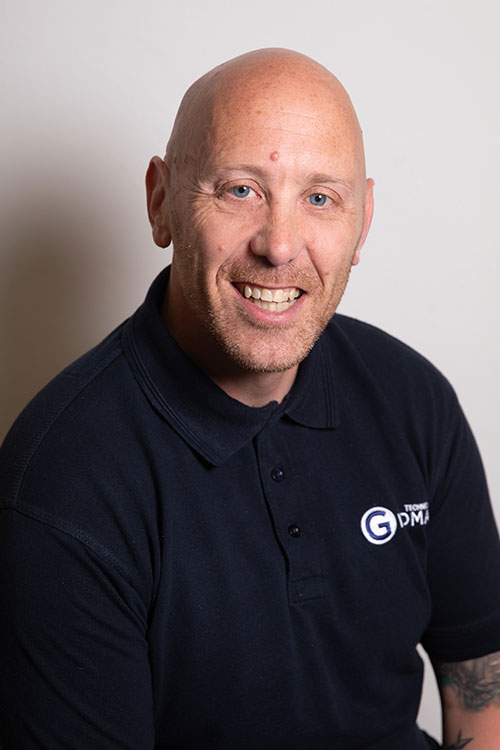The Importance of CPD Training
The importance of CPD training for surveyors cannot be overlooked, especially when it comes to ensuring everyone’s health and safety. This includes external contractors and overseas workers, who may have different health and safety requirements from those outlined in UK law.
Regular CPD training ensures up-to-date and effective health and safety policies are led from the top, adhering closely to legal requirements. This usually underpins a company’s health and safety policy statement, setting out the company’s procedures in a clear way. The policy statement should include clear descriptions of who is responsible for specific roles, so that everyone in the organisation has a clear understanding of their own accountability.
Whether you’re a RICS-regulated organisation or you’re a non-affiliated company, every surveyor must comply with its clients’ health and safety requirements. This can involve specific CPD training for contractors and subcontractors and company policies may need to cover:
- Health and safety training.
- Identification of potential risks.
- Clear accountability for health and safety management.
- Appropriate procedures and policies for managing health and safety issues.
- Appropriate insurance, including public liability insurance and employer’s liability insurance.
The concept of a ‘safe person’
One of the aims of RICS is to promote the idea of a ‘safe person’. This concept encourages individuals to take responsibility for their own behaviour, while ensuring the safety of their colleagues and any other personnel they encounter during the course of their work.
CPD training enables surveyors to be aware of the latest guidance, so you can implement specific processes on areas including:
- A safe and secure working environment.
- Appropriate equipment and safe working systems.
- Well-trained employees who understand what’s required of them.
The above points are easier to achieve in a low-risk environment, such as an office, but it is much more complex when working on potentially hazardous sites. Therefore, it’s primarily down to managers to ensure health and safety compliance.
The following benefits can be achieved through regular CPD training:
- Workers have the knowledge and skills to complete the tasks required of them.
- Ongoing training helps employees recognise and deal with potential hazards.
- Keeps employees informed about specific risks associated with their work and control measures can be issued.
- Provides appropriate equipment for employees.
- Defines safe working practices and ensuring these are adhered to.
Employees have responsibilities too
Using the example of an organisation’s health and safety policy, it’s also down to individual employees to make sure they take responsibility for their own safety. This means ensuring they have the necessary skills and competence to undertake their work safely. They may need to improve their skillset or undertake additional CPD training, if necessary, so they have the ability to recognise their shortcomings and limitations. They can then seek to redress any imbalances.
Adapting to change
It’s down to every organisation to create effective workplace policies, but it’s not always possible to define every type of working environment. The very nature of surveying work means that exposure to a wide variety of working conditions and environments that all offer different challenges is inevitable.
Furthermore, every individual’s perception of risk varies according to the circumstances in which they find themselves. Someone’s age, or previous experience, could influence their decision making. This is something that needs to be factored in when defining potential risks in the workplace and may result in the need for training.
Using the example of health and safety again, regular CPD training helps to ensure a proactive approach to compliance. Every employee should therefore aim to accept the following responsibilities:
- Cooperate with their employer and other employees to ensure the health and safety of everyone who could be affected by their activities.
- Accept their own responsibility for keeping themselves safe, by adhering to all requirements, whether defined by law or by management.
- Share health and safety information with others and strive to promote safe methods of working.
- Report health and safety risks to management, along with any breaches of the rules.
- Ensure their own competence is maintained at acceptable levels, when it comes to health and safety concerns.
Specific dangers of working at height
One of the primary risks when working on site comes from working at height, such as when carrying out roof inspections or repairs. For example, scaffolding must be checked by a competent person before it can be safely used, whilst cherry pickers must be certified as safe before being used by a trained operative. For more insights, read our blog Health and Safety – Working at Height on Roofs.
Gable walls, parapets and chimney stacks are always areas of concern, as are bulging, leaning or unrestrained walls. Corroded fire escapes represent an additional hazard, while rotten or corroded beams could cause a roof to collapse, with potentially catastrophic results. By undertaking ongoing CPD training, you and your colleagues will always be aware of the latest guidance on such hazards to ensure health and safety protocols are in place.
When it comes to commercial roofing systems, Giromax® products offer innovative, market-leading solutions for cut edge corrosion and weather damage.
If you need advice on any of our product range, please speak to the Giromax team or call 01455 558969 today.
Get updates from us
Sign up to our newsletter to receive all the latest news and insights from Giromax Technology.
Subscribe to NewsletterRelated articles
7 Reasons Why Regular Roof Maintenance is Important
There are many reasons why regular roof maintenance is important, from avoiding costly repairs to energy efficiency. Lets look at...
8 Benefits of Roof Coatings
The benefits of roof coatings include durability, energy efficiency, environmental sustainability and cost savings. In this blog we take a...
5 Ways to Prevent Corrosion in Commercial Buildings
Corrosion protection is an important part of maintaining any industrial premises. In this blog we look at how to prevent...








